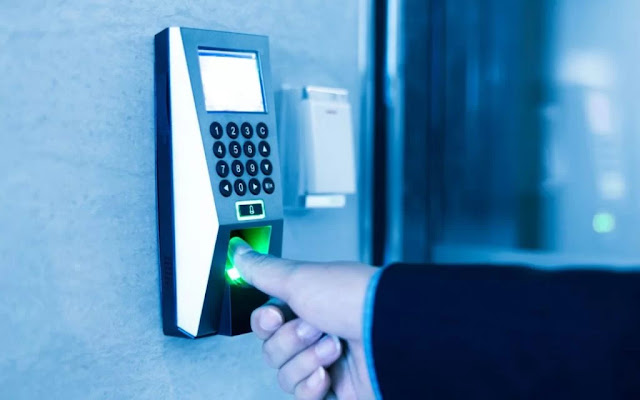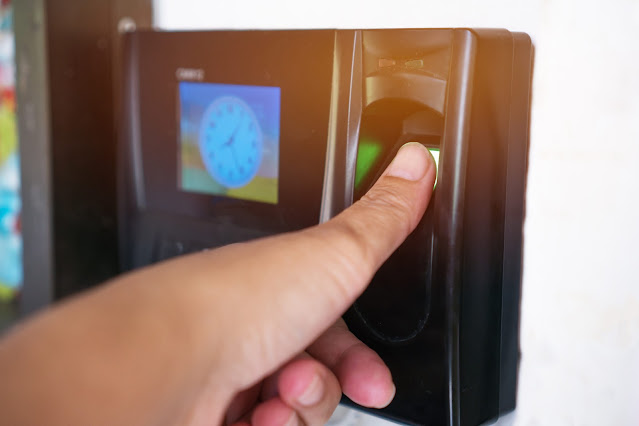Have you ever wondered if there's a more reliable way to track employee hours? Are you keen to minimise manual record-keeping, reduce time theft, or simply take advantage of modern technology? A biometric time system might be the perfect fit. In this blog post, we’ll explore how biometric time and attendance solutions help streamline operations, save costs, and improve overall productivity for Australian businesses.
In the pages ahead, you’ll discover the key benefits of a biometric staff attendance management system, learn about different biometric time attendance system price devices, and find out how to plan your biometric installation step by step. We’ll also shed light on privacy regulations and best practices, especially in places like Australia, Guilford County, and Greensboro County. By the time you finish reading, you’ll have a clear roadmap for installing and configuring a biometric clocking system, from the initial needs assessment through to ongoing maintenance.
So, get comfortable and let’s break down the entire process—from understanding a fingerprint payroll system to forming a biometric time and attendance policy that keeps employees informed and confident. If you’ve ever asked, “How is a biometric time attendance system price different from conventional attendance tracking?”, rest assured we’ll tackle that and other FAQs. Let’s begin by taking a closer look at core reasons why this technology is so important.
Key Benefits of Biometric Staff Attendance Management Systems
Biometric time attendance system price solutions are famous for their ability to optimise daily workforce management. By using unique physical identifiers like fingerprints, iris scans, or facial recognition, these systems dramatically reduce the chance of “buddy punching” or fraudulent clock-ins. Plus, they free employers from endless manual calculations and errors associated with paper-based methods.
Understanding Biometric Time System Technology
When you dive deeper into biometric time attendance system price, you’ll find there are multiple ways to collect and verify data. All methods aim to streamline clock-in processes and ensure accurate attendance logs, but they can vary in set-up, reliability, and cost.
Fingerprint Payroll System vs. Other Biometric Methods
The fingerprint payroll system is a common option due to its ability and user-friendship. Employees only press their finger on a sensor, which reads the unique ridge patterns. Other biometric methods include facial identification, palm vein scan and detection of iris. Each has benefits - clear recognition in such industries can be better where workers wear gloves for example. However, the fingerprint parole system remains a solution thanks to their simplicity in many Australian businesses.
People also ask: "How correct are biometric time and appearance equipment?"
These devices are usually highly accurate, with fingerprint sensors often claim more than 95% accuracy rates. While factors such as dirty sensors or smooth fingers can reduce reliability, regular maintenance and training go a long way in preserving top performance.
4. Planning Your Biometric Installation Step by Step
It is necessary to start a biometric installation step by step to avoid wasted resources and ensure a smooth rollout. Solid planning helps you choose the right hardware and software keeping in mind the needs of employees at the center of your strategy.
Selecting Suitable Biometric Time and Attendance Devices
Next, find out which biometric time appearance system price devices are the best fit. Does your workplace demands facial identification system due to the use of gloves? Or is a fingerprint payroll system enough to handle your day-to-day traffic? Balance cost with reliability. The cheap solution cannot always offer the data encryption or device durability required for you. Similarly, choosing a premium biometric time and appearance solution can be overcome if you just have a handful of employees.
Establishing a Biometric Time and Attendance Policy
A biometric time and attendance policy underlines the dos and dont to the employees. This policy ensures that everyone understands that data is collected, how it is handled, and if they need to take them to check any difficulties, they need to be taken.
Biometric Time Attendance System Price In, Time Out
Clearly communicate clock-in and clock-out requirements, so there is no confusion about how to use equipment. For late arrival, mention any grace period or process for employees who forget to clock. Specify if employees can check their own logs, and if yes, how they access that information.
Handling Exceptions and Manual Overrides
Your biometric staff attendance management system should include a casual plan. What happens if the fingerprint sensor is malfunction, or if an employee's fingerprint does not scan properly? By having a backup login process or manual override, you ensure minimal disruption.
Integrating the Biometric Payroll System
The biggest draw of biometric technology is how it aligns with payroll processes. By synchronizing the data, you release the laborious phase of converting the manual test into a digital record.
Training and Onboarding Staff
While biometric time attendance system price solutions are usually comfortable, spending time on training and onboarding all helps to adapt to all. Good communication from the beginning also helps in reducing any privacy concerns and promoting the acceptance of the new system.
Practical Steps to Set Up a Biometric Time Attendance System: Conclusion
A biometric time attendance system provides a precise, transparent method for businesses to briefly track its workforce to the policy. Using fingerprint parole system or other biometric time and appearance devices, employers reduce time theft, streamlines parole, and elevate productivity. Importantly, proper planning - from the evaluation of a detailed requirements to select the right biometric techniques - leaves the foundation for a successful installation.
Once your biometric appearance software becomes configured, it is important to keep data privacy in front and center. This ensures that your employees feel comfortable with this process and that your organization remains in line with regional rules in Australia, Gilford County, Greensborough County, or wherever you work. Don't forget to roll a clear policy, train your employees, and conduct regular maintenance to prevent downtime.

